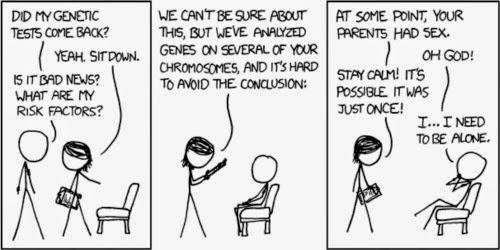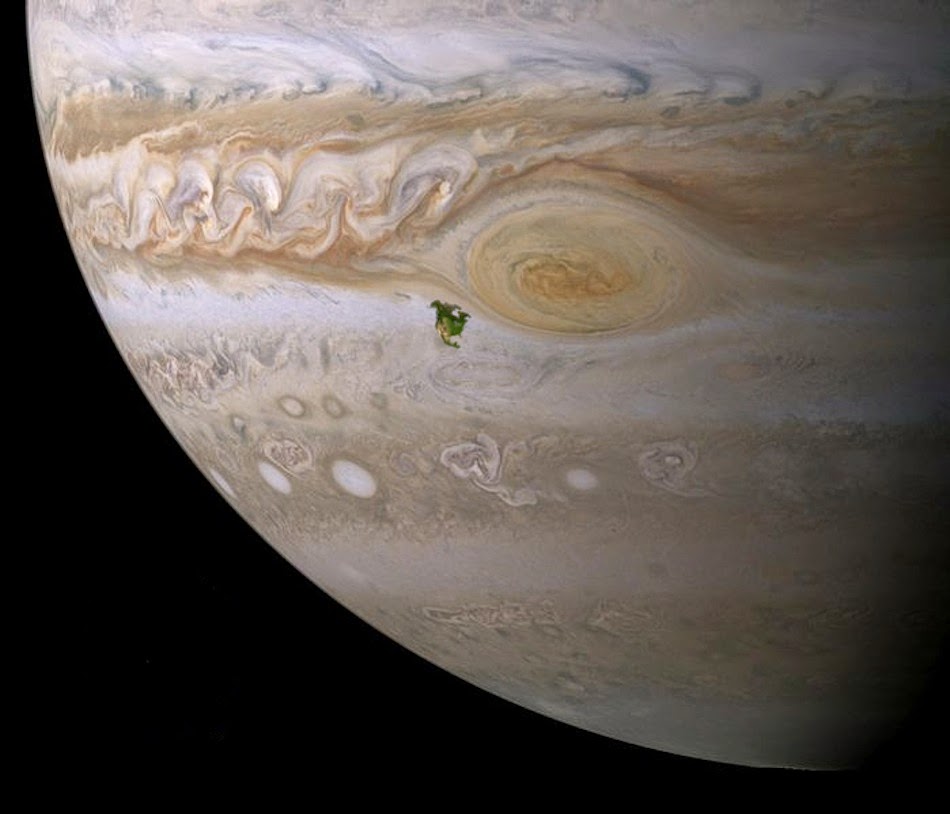Genius, world class athlete, 200 year life expectancy. By unlocking our genetic code this could be a description of every single human being in the near future. In the past few hundred years we've discovered the laws of gravity, how to utilize electricity, the theory of relativity, vaccinations, and so much more. Only recently in the 20th century have we started delving into the building blocks of what makes us, well, us. Millions of years of human evolution has resulted in Homo Sapiens as the dominant, most intelligent species on Earth. Today we are on the verge of changing the course of humanity through the ability to manipulate these genetic building blocks; the newest technology is ourselves.
Ahead I'll briefly lay out the history of genetics, how we've successfully manipulated genetics with plants and animals, and finally how genetic engineering will change the human race drastically.
A Brief History
- Around 1200 BC humans started selectively breeding plants and dogs, although we had no idea of the mechanisms we were manipulating at this point.
- Humans would unknowingly continue to refine selective breeding until 1866, when Gregor Mendel, using pea plants, presented his controversial Mendelian Inheritance Laws (Recessive & Dominant traits, aka when you learned about blue eyes being recessive in school, see below).
 |
| Thought You'd Never See It Again, Huh? |
- Finally Thomas Hunt Morgan proved Mendel's recessive & dominant trait through extensive studies of fruit fly genetics. Fruit flies live short lives and have large bundles of offspring, allowing Morgan to study the impact of hundreds of generations of genetic evolution in a short time. In 1915 Morgan went on to combine his and Mendel's findings in The Mechanism of Mendelian Heredity, which is considered the foundation of modern genetics.
 |
| This Is Harry Houdini But Does It Really Matter? |
- For the next 60 years our understanding of genetics slowly improved until the boom of modern genetics in 1977. In that year British biochemist Fred Sanger and his team sequenced DNA for the first time in history using the Sanger Method ("dideoxy" chain-termination method).
- Dolly the sheep became the first animal ever cloned in 1996.
- In 2003 the 13 year Human Genome project was completed, where scientists successfully mapped 92% of the human genome at 99% accuracy, setting up our look into the future of humans. Now, Google will even sequence and store your genome for a mere $25 a year.
Before going into how human genetic engineering is changing the world, it is helpful to observe examples of how we've already been successfully utilizing similar techniques for plants and animals. Humans have only known about genetics for about 150 years, yet we've unknowingly utilized genetics for thousands of years through selective breeding. Selective breeding is simply playing with genetics on a long term scale by breeding plants/animals with more desirable characteristics. The first domesticated animal was thought to be the grey wolf (descendant of modern dogs) around 12,000 BC, while the first plants enhanced was a type of wheat around 10,500 BC.
 |
| Sometimes We Mess Up Though... |
 |
| Could You Imagine? |
Super Humans
Taking all that we've learned from our mistakes, our successes, and exponential technology growth, we are left at a point in time where genetically engineered enhancements to humans is very real. Human genetic engineering begins by understanding our genes through complex sequencing. As mentioned above, by 2003 we had already sequenced 92% of the human genome at 99% accuracy, and this is only getting cheaper and easier. With our increase in understanding comes technological progression to the point that scientists have small enough tools to physically manipulate DNA, and thus our genetic code. There are 2 key benefits: Decreasing negative genetic mutations and increasing positive genetic mutations.
Taking all that we've learned from our mistakes, our successes, and exponential technology growth, we are left at a point in time where genetically engineered enhancements to humans is very real. Human genetic engineering begins by understanding our genes through complex sequencing. As mentioned above, by 2003 we had already sequenced 92% of the human genome at 99% accuracy, and this is only getting cheaper and easier. With our increase in understanding comes technological progression to the point that scientists have small enough tools to physically manipulate DNA, and thus our genetic code. There are 2 key benefits: Decreasing negative genetic mutations and increasing positive genetic mutations.
Some people are naturally born with positive random genetic mutations that, if studied and understood, could potentially be inserted into the rest of the population. Here are some 4 documented genetic anomalies that might lead to scientific breakthroughs soon:
| Genetic Mutation | How? |
|---|---|
| Super Endurance | High response to Erythropoietin, causes abnormal amount of Red Blood Cells |
| Super Strength | Unregulated Myostatin inhibitors, muscle fibers don't slow down growth |
| Less Sleep | Abnormal DEC2 gene, shorter REM cycles, some need only 4 hours of sleep |
| Dense Bones | Mutated SOST gene, gain bone mass through unregulated bone growth |
 |
| Doctors Hate Him! Unregulate Myostatin Inhibitors With One Simple Pill! |
If scientists do find a way to "install" these genes in the general population you can imagine the endless possibilities, and China might be nearly there. You're probably starting to see the rich possibilities that exist with genetic engineering, and while China has a far lead in this field, there are many potential dangers. China's culture is well known to have a long term orientation (they think about the effect something might cause for several generations ahead) and thus they have been experimenting with genetic engineering for several years. The Chinese BGI Gognitive Genomics Project is sequencing DNA from 1,000 high IQ individuals around the world in order to be able to predict genes with high correlation with intelligence. They could then allow couples to select their "most-intelligent eggs" and effectively increase IQ's from 5-15 points per generation.
Perhaps overly pessimistic in nature (but perhaps not), the possibility of creating superior intelligence should excite/scare people. However instead of working together to further humanity genetics could also be the next nuclear war type scenario; the countries with the most advanced genetic engineering would have the strongest, fastest, and smartest soldiers as well as general population.
 |
| Who Will Come First: Wolverine Or Iron Man? |
Genetic engineering offers us endless possibilities as a species, but much like AI, endless dangers if not regulated and used responsibly. For now the chance to end certain diseases and improve people's health is simply too intriguing. Only time will tell how much we are able to unravel the greatest mysteries of ourselves.
“I have all these great genes, but they're recessive. That's the problem here.” – Calvin
-Ryan Gardner

























